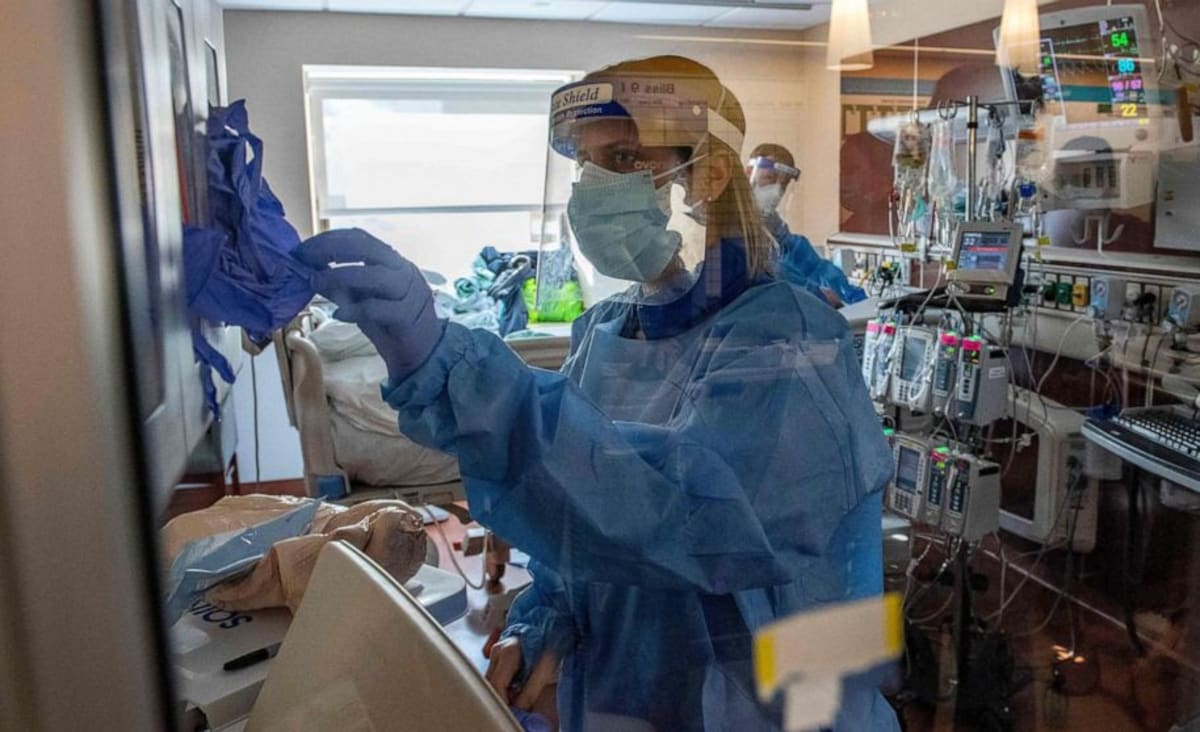This post may refer to COVID-19
To access official information about the coronavirus, access CDC - Centers for Disease Control and Prevention.

abcnews.go.com
2 years after COVID first hit the US, hundreds of thousands of Americans are still falling ill
Two years ago, on January 21, 2020, the C.D.C. confirmed the first domestic case of coronavirus.
Health
At the beginning of 2020, as the nation celebrated the start of a new year, many Americans were still unaware of the "mysterious pneumonia" that had sickened dozens of workers at a live animal market in Wuhan, China.
The illness, later identified as the "novel coronavirus", began spreading rapidly across the globe. Several studies have suggested that the virus had already been spreading in the United States, potentially as early as December 2019.
However, it was not until mid-January of 2020, when the virus would officially be recognized as present on U.S. soil.
Two years ago, on Jan. 21, 2020, the Centers for Disease Control and Prevention (CDC) confirmed the first domestic case of coronavirus. The positive patient was a 35-year-old man from Washington state, who had recently returned from Wuhan, China.
Now, two years later, the U.S. has confirmed more than 69 million COVID-19 cases, and 859,000 deaths, the highest in the total for any country, according to data from Johns Hopkins University. And the nation, despite the wide availability of highly effective vaccines and novel treatments, is experiencing its most significant surge on record due to the highly transmissible omicron variant and tens of millions of eligible Americans remaining unvaccinated.
“These last two years have brought transformational advancements spanning vaccines, treatments and testing. Though these tools are having a clear impact on reducing poor outcomes, we are still seeing one of the worst surges to date,” said John Brownstein, Ph.D., an epidemiologist at Boston Children's Hospital and an ABC News contributor.
'Low' risk morphs into pandemic
Just days before the first case was confirmed two years ago, the CDC had implemented public health entry screening at several major airports including San Francisco International Airport, New York’s John F. Kennedy International Airport and Los Angeles International Airport.
At the time, the CDC reported that while the virus was originally thought to be spreading from animal-to-person, there were "growing indications" that "limited person-to-person spread
"This is certainly not a moment for panic or high anxiety. It is a moment for vigilance," Washington state Gov. Jay Inslee said during a news conference that same day. "The risk is low to residents in Washington."
Less than a week after the first domestic case was confirmed, Dr. Nancy Messonnier, director of the National Center for Immunization and Respiratory Diseases, which is a division of the CDC, stressed that the “virus is not spreading in the community… For that reason, we continue to believe that the immediate health risk from the new virus to the general public is low at this time.”
In late February, Messonnier said she ultimately expected to see community spread in the U.S. At the time, health officials noted that the virus may not be able to be contained at the border and that Americans should prepare for a "significant disruption" in their lives.
In the months to come, Life Care Center of Kirkland, a skilled nursing and rehabilitation facility in Seattle suburbs, would become the first epicenter of the virus' deadly journey across the country. The epicenter quickly then became New York City, which experienced hundreds of deaths a day at the peak of April 2020.
























































